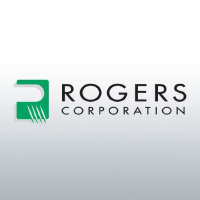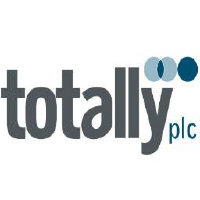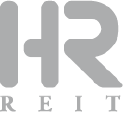
EcoSynthetix Inc
TSX:ECO

Earnings Call Analysis
 Summary
Q3-2023
Summary
Q3-2023
In Q3 2023, the company reported a 24% decrease in sales year-over-year due to lower demand in the graphic paper end market. Despite the overall drop in industry demand, which fell 41.7%, the company's gross profit rose to $1.2 million in the quarter, helped by an improved product mix leading to higher margins. Margins increased to 34% from 23% the previous year but may normalize as commodity chemical prices decrease. The company also indicates strong ongoing trial activity for its DuraBind resin and is optimistic about returning to growth in 2024.




























 You don't have any saved screeners yet
You don't have any saved screeners yet

Good morning, ladies and gentlemen. Thank you for standing by. Welcome to the EcoSynthetix 2023 Third Quarter Results Conference Call. [Operator Instructions] Listeners are reminded that portions of today's discussion may contain forward-looking statements that reflect current views with respect to future events. Any such statements are subject to risks and uncertainties that could cause actual results to differ materially from those projected in the forward-looking statements. For more information on EcoSynthetix's risks and uncertainties related to these forward-looking statements, please refer to the company's annual information form dated February 28, 2023, which is posted on SEDAR.
This morning's call is being recorded on Friday, November 3, 2023 at 9:00 a.m. Eastern Time. I would now like to turn the call over to Mr. Jeff MacDonald, Chief Executive Officer of EcoSynthetix. Please go ahead, sir.
Thank you. Good morning. We issued our 2023 third quarter results yesterday afternoon. Sales were $3.8 million up sequentially by 29% from the second quarter, but still up 24% from the same period last year due to lower volumes. I'm often asked why we're not seeing more momentum in the business. The lack of growth in our volumes is frustrating. What I can say is that trial activity is accelerating. The trial results are very positive across the board, and the weekly reports on our sales prospects continue to expand. The roster of trial activities and prospect activity gets me excited every week and keeps the team motivated that we're making progress. But it's been a slow process. Our solutions are disrupting entrenched chemistries that have been used for decades in these end markets. The pace of industrial changes slow, but we are making progress. The international retailer that is backward integrated into wood panel production and the global pulp producer that are each working with us are proof of the value proposition our solutions bring to multibillion-dollar end markets. The deterioration we have endured in the graphic paper market has been partially offset by the stability and modest growth in our newer end markets of wood composites, tissue, paperboard and pulp and personal care. That change in proportionate mix is supporting the improved margin profile of the business. Graphic paper is at such a low base today that the growth we expect will be entirely driven by our new markets. On the tissue paperboard and pulp end market, we won our first accounts approximately 1 year ago, after about 1 year of qualifying our new products with these accounts. These proof points give the distributors we work with the confidence to go out and build a pipeline of prospects over the course of the last 12 months and promote our Surflock offering with their customers. Based on our learnings from those first wins, we continue to broaden our opportunity pipeline through focusing on new lines of existing customers, new customers, new geographies, new applications and new distributors. Our relationships with distributors are a core part of onboarding new prospects in the market. The distributors understand the complexity of the mix that goes into creating the pulp product and the variables and chemistries involved. We have one chemistry. They have the capability and capacity to work with multiple chemistries and conditions required to make tissue packaging and other paper products. In most cases, these distributors are procuring a range of ingredients and formulating the right solution for the tissue and packaging producer. Today, that range includes Surflock. They then sell that formulated solution to the end customer and provide support on a 24/7 basis. It became clear to us early on that they're an important part of the value chain that we sell into. They see the value in our Surflock strength aid, and they see the opportunity in front of us in the tissue, paperboard and pulp end markets.
That pipeline that we're building together is in various stages of trial activity. Some more advanced with multiple successful trials complete and some earlier stage in their first or second trial. Converting these prospects to commercial accounts is a key priority for us. The progress with our first commercial wins has been slower than we had expected due to demand headwinds. The first packaging account has started to see improved demand dynamics and their order frequency has increased during the third quarter and now into the fourth. But they're not up to their full potential yet. Their outlook continues to improve, and it's improving in the products that we are supporting. On the tissue accounts, the destocking trends experienced during the past year have subsided, but weak and inconsistent demand remains. They believe it's a short-term blip and nothing more, but it speaks to the state of the market in tissue and packaging that these accounts are dealing with. The global pulp producer that we're working with undertook the next phase of their trial program during the quarter. This consisted of a significant step-up in the use of our Surflock strength aid, a longer run using more Surflocks, producing more pulp for their end customers. The trial was further proof of the value proposition for them and demonstrates their commitment and novel approach to this large market opportunity. This is a large volume, multimillion dollar opportunity for us. While it will require more trials before a commercialization decision is reached, it is fair to say that we're now very excited about this opportunity and the results to date. On the wood composites front, our key strategic account, which is a backward integrated wood panel producer for an international retailer continues to make progress. It's been a 10-year development project that is now at the implementation stage. It's clearly become a lot more of an operating priority for them. They're expanding their usage of DuraBind at the first facility, and we're working with them on the introduction at a second facility. This account is the catalyst in the market. They see the use of bio-based glues as an important step in their commitment to reducing their carbon footprint. Using bio-based glues in their own production is the first step to our change in the market. More recently, they've made it clear to their supply chain partners that glues are a major component of their carbon footprint and a priority for change. We're taking their lead in terms of the suppliers that are most important to their supply chain. We're being very selective in terms of which suppliers are willing to make a meaningful investment to move toward bio-based glues. That investment demonstrates a conviction to change. No one is making that kind of commitment to the level that the international retailer and wood panel producer has so far, and they move markets, however. We continue to believe the wood composites end market is a major growth opportunity for us. Based on conversations with investors, the tissue, packaging and pulp end market is often the focus. From my perspective, wood composites and tissue packaging and pulp are targets 1A and 1B. I believe both end markets will make significant contributions to our long-term success. The wood composites opportunity has taken a long time to get to this stage, but it's well proven and immediately in front of us today with the most important player in the market supporting the adoption of bio-based glues and using DuraBind in their regular commercial operations. On the personal care front, Dow has collected a few more small wins through the year with Maize care formulations that use our Bioform as an all-natural film former. Dow's sales and marketing team continues to build out their pipeline of prospects with the expectation that in the next few quarters, one of the bigger longer-term opportunities they've been supporting may come to fruition. There is also continued engagement between our two development teams, working on new ingredients and formulations within and beyond the hair fixative market. The investments they're making in the marketing and development programs demonstrates their conviction to Maize Care's success, and we share that confidence. Wood composites and tissue, paperboard and pulp are the primary growth drivers of the business. We view personal care as a warrant on that growth, and we'll continue to be patient and support Dow's progress. At this point, 12 months ago, the #1 concern of mine was feedstock availability and the related impact on pricing dynamics and on our growth. We managed through those issues and avoided feedstock availability encumbering our long-term growth. The availability issues are now behind us. The harvest this season has been good and that's led to an easing in the pricing of corn futures. There is still a disconnect between corn futures and the price of starch, but that disconnect is waning. Starch pricing is off the historical highs that we saw late last year and early in 2023. It's still higher than normal, but it's more manageable, which makes it more reasonable to pass through the current pricing. With the availability of the new harvest, we're now qualifying additional supply options, which gives us greater leverage and optionality should availability become a concern again. And lastly, we've made substantial progress on our manufacturing realignment. We've ended our toll relationship at the manufacturing facility in Tennessee and are in the process of removing the line. The new extruder we purchased for the Center of Innovation here in Burlington, has already arrived on site. We're on budget and on schedule to commission the new line by the end of this year. Internalizing North American production provides us with greater control and supply chain flexibility and risk management. We will now have more control of the manufacturing process as we launch new products, win new accounts and grow with existing accounts. And with that, I'll turn it over to Rob to review the financials. Rob?
Thanks, Jeff, and good morning. Net sales were $3.8 million in Q3 2023, down 24% compared to the same period in 2022. This decline was due to lower volumes into the graphic paper end market. North America industry data shows demand for coated paper dropped 41.7% in Q3 year-over-year. However, the declines have stabilized in September. Gross profit was $1.2 million in the quarter, an increase of $120,000 from the same period last year. The increase was primarily due to higher margins enabled by improved product mix. Net of manufacturing depreciation, gross profit as a percentage of sales was 34% in the quarter compared to 23% for the same period in 2022. We are seeing some pricing pressure in Q4 beyond our raw material cost savings as competitive commodity chemical prices decreased from their recent highs. This will likely result in our margins returning to more normalized levels. SG&A expenses were $1.2 million this quarter, in line with the prior period. R&D expenses were $510,000 in the quarter compared to $430,000 in the same period last year. The increase was primarily due to new product scale-up costs. We continue to launch new higher performance grades and invest in innovation to improve our value proposition and expand our addressable market opportunities. Adjusted EBITDA loss was $190,000 in the quarter compared to a loss of $130,000 in the same period last year. Higher margins in the current quarter enabled the EBITDA loss to be in line with the prior period and offset the impact from top line pressure. Cash provided by operating activities was $130,000 in Q3 compared to cash used in operating activities of $2.1 million for the same period last year. In the prior period, we built up inventory levels significantly to manage through the feedstock availability issues that Jeff referenced earlier. As of September 30, we had $34.7 million of cash and term deposits compared to $36 million at December 31, 2022. During the quarter, we invested $749,000 into the NCIB to purchase and retire 275,000 shares. We have demonstrated our ability to responsibly manage our cash reserves through multiple cycles while continuing to invest in our long-term growth strategy. With that, I'll turn it back to Jeff for closing comments.
Thanks, Rob. The market feels a little more economically challenged right now. Manufacturers are more cost conscious. In parallel to the sustainability priorities of companies, we have to ensure that the value proposition of our binders is as strong as possible. That strong value proposition exists today for DuraBind and Surflock, and we're continuing to improve on that to help accelerate our growth. We're seeing strong trial activity with multiple trials ongoing across each of our end markets. Our key wood composites account is expanding usage of our DuraBind resin. The trial activity in the tissue, packaging and pulp end market is also accelerating despite difficult macro conditions in that market. While it has been a challenging 2023, we're seeing better momentum in the business and look forward to a return to growth in 2024. We're focused on delivering that growth for our shareholders. And with that, I'll ask the operator to open the call to your questions. Thank you.
[Operator Instructions] And our first question comes from the line of Brian Morrison, who is a private investor.
Jeff, it sounds like some real progression being made here. You're finally turning the corner. Obviously, a long way to go, but it sounds encouraging. So just in terms of the progression you're making on the trialing, maybe relative to 3, 6 months ago, can you maybe quantify the cadence in terms of the number of trials and what you mean by achieving desired results?
Yes. So let's start with achieving desired results because that's what's driving the expansion in the pipeline. What we took away from the wins we achieved a year ago, it has to be disguised so that we're not divulging confidential information from our existing customers, but it gave us some data that we were able to translate into applicable opportunities at other accounts. And so we've used those case studies as we've introduced this now more broadly to both customers and distributors. And there's really two levels of growth that we've undertaken in the last year when we talk about growing the pipeline. One is directly with customers and our participation alongside distributors continues, but we can't be everything that I just described to these end customers. So we've continued to sign up additional distributors. We learned through that first year of applying Surflock alongside one of the distributors that they're just a super critical part of getting this done. And so we've looked for others like them in different geographies around the world. And yes, pretty much quarter-by-quarter, we signed up at least one -- new one and introduced Surflock to them, and they're in the process of introducing that to their first customers. And I think, pretty much across the board have first trialing programs in place now. So there's the distributor level, which we see as sort of a multiplication factor to our pipeline as well as within a distributor that pipeline growing. So simple answer. And again, like until we see that it's predictable in terms of delivering results and wins. We won't give specific numbers, but it's substantially more advanced than, as you said, 3 to 6 months ago, substantially more advanced than that time frame in the last 6-plus months.
So I guess the question is in terms of a percentage increase, are you able to quantify that? And then, I guess, you're making progress with the service providers, it sounds like. Is this capturing attention from any other major players on your disruptive capabilities?
Yes. So I mean, fair to say that we're -- if we talk about the 6-month time frame, we're at least 2x in the pipeline development. And in terms of it capturing attention, I think, I mean, one of the sustained levels of attention is with the major pulp player. And I think the ability for this to modify pulp products has been recognized by others in that space as well, which is interesting and exciting. But there's also, I guess, two levels of distribution. We've chosen to focus first on the regional distributors we tend to be, say, we'll say smaller, but big within their regional geographies in terms of their reputation for providing great service to their customers. So very hands-on, but still small enough to be nimble and help drive change. And they often make the investments that may be necessary to help modify the lines upfront in order to get contracts for delivering ingredients. So they bring a lot of different means of supporting the customers that are essential for us to be successful. We think that's the fastest way to get started. But the second level is the large chemical players who provide significant volumes of chemistry into the space. So we represent either a complementary chemistry or in some cases perhaps even a disruptive chemistry I think fair to say that in a couple of cases, there's been some note taken of what we're doing there.
Okay. Excellent. So I guess when I look forward to the following year, macroeconomic growth is going to limit corporate grows, people are going to focus on cost reductions. It sounds like you've got proof of concept becoming a reality. When should we expect to see contracts forthcoming? Should we expect things in the next 3 to 6 months? Because it seems like you're in a sweet spot going forward.
Yes. The Surflock solution is all about delivering cost savings to customers. However, you slice it, and you've seen through our past conference calls, you've seen the level of -- a number of different ways that we can impact the customers' operations with this product, but it all does come back to cost. So this is a -- I think it's a great product for a cost-conscious environment, which I agree with you that we're in that vein right now. Honestly, I would have thought we would have achieved more wins already. I think the headwinds that our customers have seen have slowed that down to some degree. And I think just I guess, as often happens, more iterative trials being necessary to prove it to their liking and then getting, in some cases, the equipment in place to be able to deliver our ingredient into the line. It takes a little bit of time as well. And just a little bit of color on that maybe. So as we get started in a trial program, we're typically providing the customer with a liquid product. It's just the way it's easiest to handle. As we get closer to success, to achieve the real, let's say, the best economic gain for the customer, they would need to receive the product in dry form. And so getting the product to them in dry form and having them handle it and turn it into something that they can use them effectively in their process, deliver it, the controls associated with that. It does -- it takes some work at the grassroots level in the operation. So those things have all kind of stacked up. I would have expected some wins by this time. There's things that are far enough along in the pipeline that I think you asked the 3- to 6-month time frame, I would say, for sure.
So we are nearing the finish line with some of these trialing process?
Yes.
Okay. And I did take notice with your comment with respect to the pulp player in your previous trial that you stated. What's the process that needs to play out here? Are there pulp players looking to trial or have been in contact with you? And can you just maybe give us magnitude like how much per line and how many addressable lines are out there in this major market?
Yes. So we could not after a bigger player that has been our partner on this so far and they have multiple pulp lines, which are -- when we talk about paper line -- a paper line and sometimes a kilometer long, a pulp mill is more like a city. So these are massive operations that are usually backward are always, I would say, backward integrated to forest. Then there's no partner that's more successful in this space than the guys that we're working with, but it has caught the attention of other pulp players as well. Yes, we have been contacted. I can't give details on exactly what's happening with any of them, but there's been notice taken of what we have.
Okay. And in terms of the revenue per line potential in one of these major players, you able to share that?
Yes. So it's tens of millions per line.
And multiple lines. Okay. And then I guess also interesting was your comment with respect to your Dow partner, your personal care partner. It sounds like you've got a little bit of increased visibility with respect to potential contracts. Maybe just elaborate on that, if you could.
I wouldn't say a great increase in visibility. I mean, they own the final formulation development and the market development, but in order for us to stay in lockstep. And I would say to some degree, to make sure that we remain engaged in seeing the prize at the end of this. They do share with us some view on their pipeline. The pipeline that they have is massive. It's hundreds of opportunities that they're chasing. But also they've just given us a little bit of color that some of these very large opportunities, and it's somewhat due to the size of the opportunity. As they've been on these since we got started with Maize care together and has continued since then to the point where I think they're feeling pretty good about some successes in the coming year as a result of all of that effort. They also remind us that we got started pretty much as COVID got started. And in that market, they consider that to be pretty much a 3-year setback or a 3-year slowdown at least in that space. So Yes, they remain very excited about it. And we get a little bit of visibility that gets us excited. But we also see from a technical perspective, what our product is doing relative to some of the incumbents, and it's a great product.
Okay. And the margin profile still sort of north of 70%, 80%?
Yes.
Okay. Sorry, but two last questions, then I'll be complete. So you mentioned IKEA making great progress for your large wood partner as well. Maybe if you can just talk about how you see the cadence of that ramping up. I mean it's been pretty slow. But obviously, the market opportunity is very large. Are you starting to see that accelerate now?
We're starting to see it accelerate with that partner specifically and with their activity within their supply chain to set priorities for them. So still safe to say that the opportunity per line there with all of our products, original DuraBind, or tackifier, our catalyst rolled together, the opportunity per line the kind of $5 million range. We're not at that at the first line net. We're growing into that. And we're now introducing the product at the second line, beginning to do some trials with that second line. Those are the proof points to prove the cost and well, obviously, performance, but how to implement this bio-based solution, and they're beginning to talk about that with their supply chain. I noted it in the script, but we're going to take their lead more so now on where they see the supply chain partners that are willing to make the investment and are taking their sustainability agenda seriously. So I said it, but I haven't seen this nearly to this level in terms of an operational priority throughout our journey with them. And it's, as I said, immediately in front of us, in terms of activity to drive this for growth.
And you've done trialing with some of these external partners previously, correct?
Some of them we have, yes. And I would say at that time, and maybe we were a bit naive to it, but I'll also say that we were trying to get proof points ourselves to show industrially that DuraBind was working. But I think at that time, they understood that the sustainability agenda was on the horizon, and they charge their R&D teams with making sure that they understood it and could implement it. And in the case of some customers, they've sold some panels out into the market, albeit in a very niche way. But they just wanted to be ready for when the catalyst really came. I think our partner has shown that they expect that catalyst now from them. So it's a different time in that space.
Okay. NCIB, you've had a win here with a U.S. dollar. You remain active? Is that your plan to remain active, you potentially take it up if and when we see these contracts to get across the finish line?
We expect to remain active as we have been, Brian, in our balanced approach to our balance sheet and our cash management, but safe to say, we'll remain active as we have been.
All right. Jeff, I look forward to seeing progression.
Thanks for your questions, Brian.
Our next question comes from the line of Daniel Marks at Stonehouse Capital.
First question is a follow-up, Jeff, you mentioned in the wet end, equipment was required to get people sort of into their final stages of either the industrial trials or into commercialization. In the past, I thought I recall that the wet end was sort of maybe $50,000 or $100,000 at the most and a pretty quick one to switch over or to transition. Can you maybe expand on what is involved or what range of equipment and time to install that equipment would be?
Yes. That's an important point, Dan. Thanks. So what is required is that when our dry powder arrives at a customer's facility, there's really two steps required. The first one is to take our dry powder and to disperse it into a liquid product. So you then have call it, a tank of that liquid product ready to be delivered to the line. And then you need a delivery system effectively to take that liquid that's in the tank and port it over to the right place in the line. And then overriding all of that, you need some controls technology that ties into the central control system at the mill. So there's -- so I said two, but if you include the controls, it's kind of three parts to it that is required, given customer could require anywhere from none of that and in some cases, they may have based on past use of different ingredients. They may have all the right stuff in surplus to be able to do that. And we have one example of that or they may require all three things. The cost to do all three. We actually had a review of this with one of our distributor partners last week, and it's a distributor partner that actually makes this investment as an upfront investment in order to secure a longer-term contract for supplying the ingredients. So that's -- it's an important part of what the distributors do in some cases. They feel that based on everything they've seen so far, they actually pegged it at EUR 85,000 as an average number. So your $50,000 to $100,000 remains kind of the way we look at this. And again, like depending on the complexity from 0 to all three steps required, it can be really fast. And we did have one follow-on win in the tissue market, where the customer had everything in place and the product ran right from the get-go and they just continued running. If it takes all three, it is custom equipment. It's not super expensive or expensive, but it is custom equipment. So it can take up to 6 months to put a kit together and then get it installed at the customer. And that's kind of assuming that the customer has the capacity to be able to support an installation like that. It's not huge, but it does take some time and some downtime to be able to do it.
Got it. That's great color. This one might be for Rob. Obviously, nice move in gross margins from 20% to 30%. I presume a lot of that is product mix and obviously, sales price increase. Is that the new normal? What would you think with -- we're sort of talking about 2024. What do you think the go-forward blended gross margin we should model be?
So I'll start with that one, Dan, and then hand it over to Rob for some specifics, but I think from an overall perspective, looking forward, we're going to see two dynamics at play. We've had the highest pricing we've ever had as have many other chemical players out there. And we're seeing pressure despite oil being at a reasonably high level, we're starting to see pressure on commodity chemicals. Those things that are important to us like butylacetylene that goes into acrylic resins, formaldehyde and that's having purchasing departments asking us to sharpen our pencil as well. So I do think going forward over the next few quarters, we're going to see some pricing pressure. But also, we're going to benefit from the continued improvements, and we're not definitely not all the way through the improvements on feedstock costs. We're going to see that offsetting I think the net-net of it will be a little bit of pressure relative to the margins that we see today. But I think those two dynamics will allow us to hold a reasonable position. Rob can give a little more color on that?
Yes. I think Jeff hit all the key points there, Dan, but again, normalized margin that we would expect to see on our book of business today would be somewhere in the mid- to high 20% range. Product mix was 100% of the increase that you saw this quarter. As you know, graphic paper is typically a lower margin book of business for us. So with that decreasing significantly here, we're kind of seeing those 30% up because of that product mix impact. Definitely in order to try to accelerate our growth as much as possible, we do see the need right now to pass on some savings and go after volumes. So we expect some of that to play out over the next couple of quarters here. Our customers obviously see corn starch or corn market pricing dropping significantly. So that becomes a purchasing discussion with our sales team. Hope that gives some incremental color to that.
Yes. No, that's great. One last question over on the wood composite side. You've spoken a lot about how your key retail partner is expanding and adding a second line. Yet when I look at the segmented data, Lithuania, Q1 was 16% of about $3 million; Q2, 20% of $3 million or $600,000. This quarter, it's not greater than 10%, which would suggest volumes dropped off with your partner in Q3. Am I missing something?
Not on the micro level, you're not, Dan. So -- but volumes to any of our customers, if you segment them down to an individual customer, will be very lumpy. Q3 is typically -- it's the end of the fiscal year for that customer, and it's also a quarter which contains a month of shutdown in the month of August. So there's always going to be something at play there. And then there's always puts and takes in terms of their buying and what their inventorying as well as their product mix. So probably not super useful to parse it down to that level and look at it quarter by quarter. What I can say is they've grown to be one of our most significant customers and have grown within the year over last year. So lots more to go for them for sure, but they continue to grow in importance and the numbers to us on an overall basis.
Okay. And I guess lastly, still on the segmented data, I see the U.S. dropped below 10 and Netherlands, first time on the list. Any flavor you can give us? Is that graphic paper dropping off and wet end customers coming off?
No, it's fair to say that, that's sales through a partner, Dan. That's probably what the color we could give there.
[Operator Instructions] There seems to be no further questions from the phone lines at this time. So I'll hand the floor back to our speakers for the closing comment.
Thank you, operator, and thanks, everyone, for joining us this morning. Look forward to talking to you again soon.
Thank you. This now concludes the conference. Thank you all very much for attending. You may now disconnect your lines.